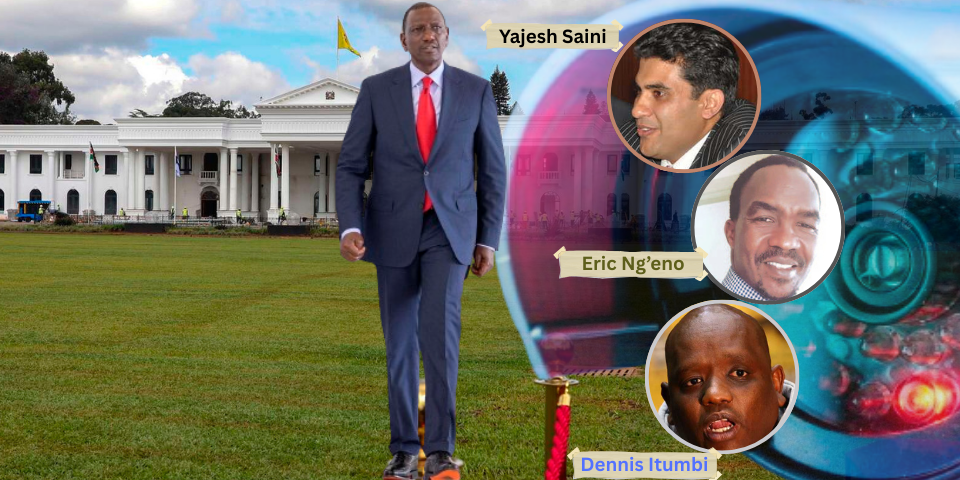Court documents reveal how influential financier’s involvement in government messaging strategy led to internal chaos and multi-million shilling lawsuit
Prominent businessman Jayesh Saini emerges as a central figure in a damaging court case that has exposed the chaotic inner workings of President William Ruto’s digital communication strategy and the bitter power struggles plaguing State House operations.
Court filings by Kenyan-Canadian citizen Mary Wachuka reveal how Saini, described by presidential speechwriter Eric Ng’eno as “the regime’s financier and oligarch,” positioned himself at the heart of government messaging operations, creating what insiders describe as “internal disarray and reputational risk.”
The Oligarch’s Influence
According to testimony in the Sh289 million lawsuit filed by Wachuka against four of President Ruto’s associates, Saini leveraged his financial contributions to insert himself into the government’s core messaging apparatus, despite not being part of the formal campaign structure.
During a November 2023 meeting at which Saini was present, the businessman openly acknowledged his influential role and spoke extensively about the administration’s struggles with information control and digital communication, court documents show.
In a chilling revelation, Saini allegedly told Wachuka that two Indian developers he had previously hired to create a similar digital system were “eliminated” under the previous regime, expressing gratitude that a local solution had finally been found.
Manual Propaganda Operations Exposed
The court filings paint a picture of a surprisingly crude propaganda operation under Saini’s influence. During the same November meeting, Saini’s assistant Nishant demonstrated their existing digital setup using just two iPhones and a laptop.
The demonstration included logging into President Ruto’s personal Twitter and Facebook accounts and showing the “laborious process of manually deleting critical comments.” More damaging still, Nishant revealed an Excel spreadsheet tracking 11 accounts managed from India that were used to post supportive comments under the President’s social media content.
According to Wachuka, Saini indicated that this rudimentary software system “would form the core of their strategy to gain control of the digital narrative.”
Internal Power Struggles
Saini’s prominent role created significant tension within State House communications operations. Presidential speechwriter Eric Ng’eno complained in WhatsApp messages that the businessman had “hijacked the government messaging apparatus,” forcing the administration into a reactive stance while the opposition appeared more disciplined and effective.
Ng’eno’s frustration with Saini’s influence reached a breaking point in December 2023, when he launched a scathing attack on the businessman in private messages to Wachuka. The speechwriter criticized Saini’s “arrogance, his proximity to the President” and accused him of offering merely a “troll farm concept that was basically Nishant and his few devices.”
“His entire strategy is visibility, apparent utility and proximity. I fell for it, I assumed his visibility was a product of merit, not graft,” Ng’eno wrote, according to court documents.
The Collapsed Deal
The power struggle between Ng’eno and Saini ultimately contributed to the collapse of a sophisticated digital propaganda system that Wachuka was contracted to develop. The Canadian-Kenyan businesswoman invested heavily in the project, even selling her house in Canada to meet contractual obligations totaling over $288,000.
When the deal fell through, Wachuka found herself facing anonymous death threats and pursuing legal action against Saini, Ng’eno, Head of Public Service Felix Koskei, and Treasury Principal Secretary Chris Kiptoo.
During an August 2024 meeting at State House to resolve the impasse, Saini acknowledged his involvement in the software project when contacted by the President’s private secretary, though he claimed to have stepped aside due to cost concerns.
Broader Implications
The court case exposes not just the government’s efforts to develop sophisticated digital propaganda capabilities, but the chaotic nature of decision-making within President Ruto’s inner circle. Saini’s role as an unofficial power broker appears to have created confusion about authority and accountability in sensitive government communications operations.
The businessman’s influence extended beyond mere financial contributions to operational involvement in managing the President’s personal social media accounts and coordinating responses to critics – activities typically reserved for official government communications staff.
The revelations raise serious questions about the boundaries between private influence and public authority in the current administration, particularly regarding wealthy individuals who have leveraged financial support into operational control over sensitive government functions.
As the court case proceeds, Saini and his co-defendants have denied the allegations and asked for the petition to be dismissed, arguing that Wachuka was pursuing an unconstitutional project. However, the detailed WhatsApp conversations and meeting records presented in court filings provide an unprecedented glimpse into how private wealth can shape government communications strategy – and the chaos that can result when informal power structures clash with official authority.
There's no story that cannot be told. We cover the stories that others don't want to be told, we bring you all the news you need. If you have tips, exposes or any story you need to be told bluntly and all queries write to us [email protected] also find us on Telegram

